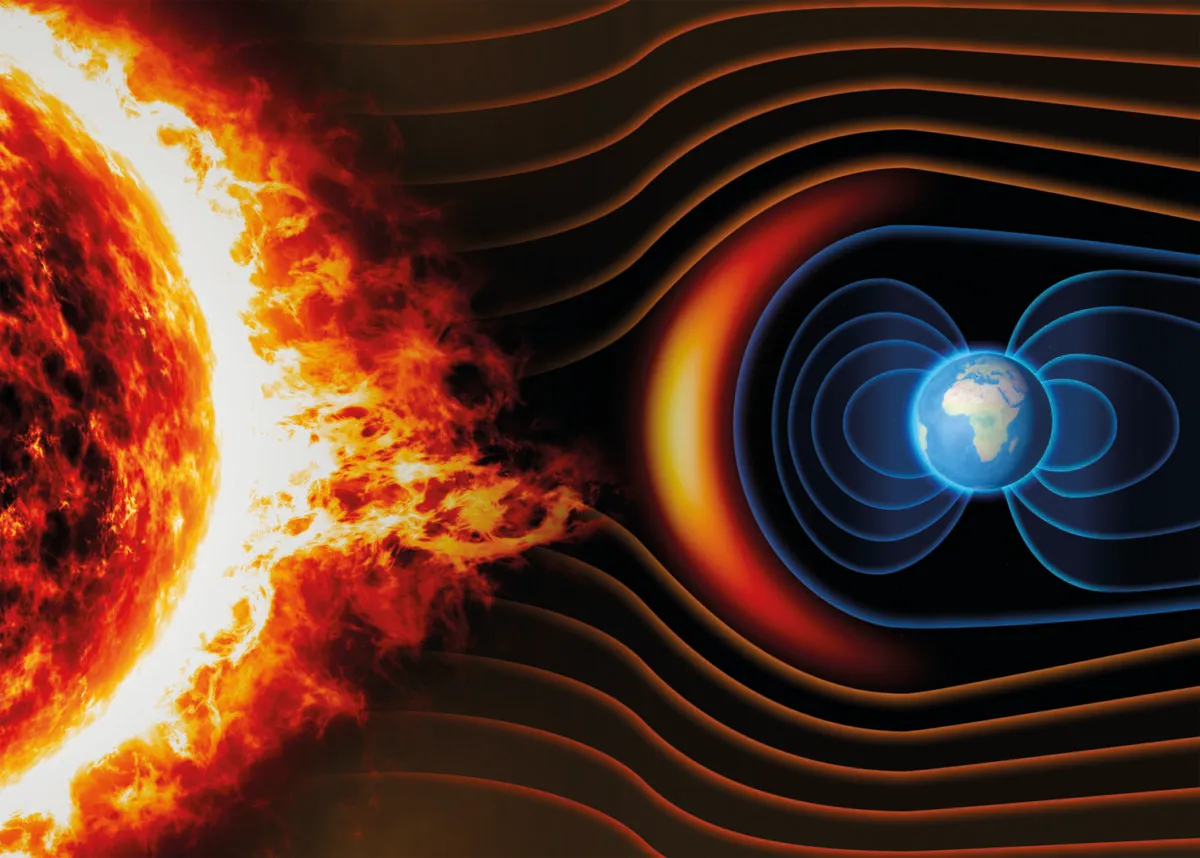The rocky inner planets of the Solar System – Earth, Venus and Mars – all have about the same mixture of iron and silicate rock in their make-up, and so are roughly the same bulk density. But Mercury is something of an oddity. The innermost world is much denser than you would expect as it has a huge iron core that makes up over 80% of the planet’s diameter (for comparison, Earth’s is closer to 10%).
The leading explanation for this is that Mercury did form similarly to the other rocky planets, following the same primordial recipe, and was once about the same size of Mars.
But shortly after its formation, Mercury was struck by a colossal impact.This hurled away most of its outer mantle, leaving behind the iron core to make up a much greater fraction of the final planet.
Read more from Lewis Dartnell:
- Does oxygen on an exoplanet indicate an Earth-like world?
- How do binary asteroids form?
- Could exoplanets host a global electric current?
This giant impact hypothesis makes a lot of sense on the face of it, and indeed giant impacts during the Solar System’s early years are thought to be behind the formation of Earth’s Moon and the tilt of Uranus.
One major problem with this idea is that much of the vaporised material blasted off Mercury by a giant impact would condense into solid spherules.
These marble-sized pebbles would remain in nearby orbits to Mercury around the Sun, and so simply re-accrete back onto the planet over a few tens of millions of years.
So the overall iron-silicate ratio of Mercury wouldn’t end up changing much at all.
The mystery, then, is if a giant impact did strip away Mercury’s silicate outer layer, what stopped it all re-accreting again?
Christopher Spalding and Fred Adams, authors of a new paper, think they have the answer.
The key, they say, is to consider the solar wind; a flow of charged particles racing out from the Sun at hundreds of kilometres a second.

While this solar wind is very diffuse, it does induce a drag force on orbiting bodies. And, as Spalding and Adams point out, the primordial Sun during the time of these giant impacts, around 4.5 billion years ago, would have possessed a stronger magnetic field, faster rotation, and a stronger wind.
In fact, the solar wind streaming off the young Sun was likely to be 10 to 100 times more intense than today.
With such a strong flow of solar wind, the material blasted off Mercury would experience a significant drag and be readily cleared away from the planet’s orbit.
Spalding and Adams calculate that over a timescale of less than a million years, the ejecta would have migrated away from Mercury.
This is much quicker than the material could re-accrete back onto the planet, and so this solar wind sweeping processes provides an explanation for how Mercury could have been stripped of its silicate mantle by a giant impact, without then collecting it all back up again.
It turns out a rampaging nameless protoplanet could have created Mercury as the cannonball world it is today by conspiring with a more intense solar wind.
Prof Lewis Dartnell is an astrobiologist at the University of Westminster. Lewis was reading The solar wind prevents re-accretion of debris after Mercury’s giant impact by Christopher Spalding and Fred C Adams. Read it online here.
This article originally appeared in the May 2020 issue of BBC Sky at Night Magazine.
